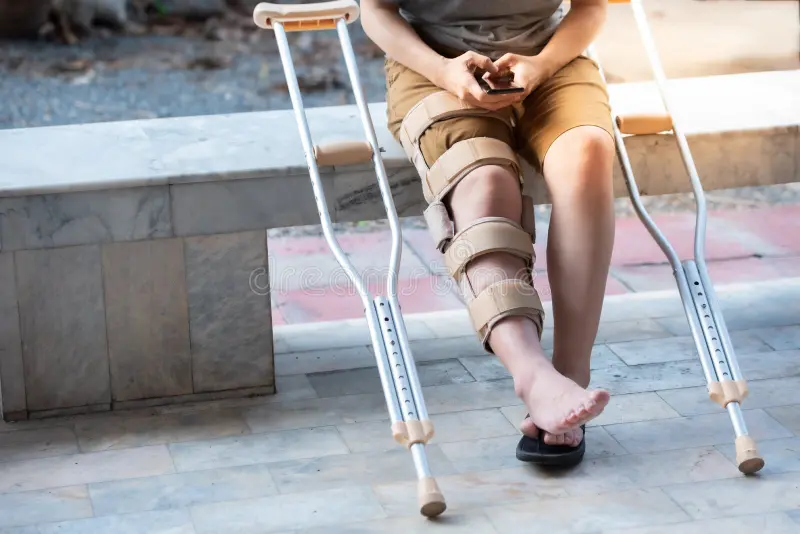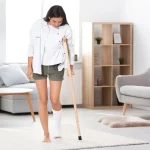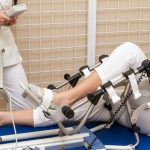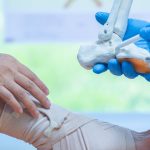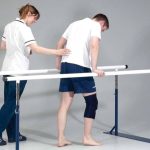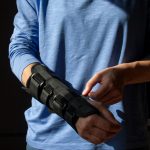Updated on February 10, 2020
Medically reviewed by Stuart Hershman, MD
Increasing numbers of people of all ages have been heeding the advice to get active for all of the health benefits exercise has to offer. But sports injuries can be the price you pay, particularly if you overdo it or you don’t properly train or warm-up.
Video: “Rehabilitation after a Hand Fracture”
Upper limb. Set No.1 improvement of mobility and range of joint movement
For additional information about the recovery process after a hand fracture, you can watch a video demonstrating exercises and rehabilitation recommendations.
Fortunately, most sports injuries can be treated effectively, and most people who suffer injuries can return to a satisfying level of physical activity after an injury. Even better, many sports injuries can be prevented if you take the proper precautions.
Some sports injuries result from accidents; others are due to:1
- Poor training practices
- Improper equipment
- Lack of conditioning
- Insufficient warmup and stretching
What Are Sports Injuries?
The term sports injury, in the broadest sense, refers to the kinds of injuries that most commonly occur during sports or exercise.

Although virtually any part of your body can be injured during sports or exercise, the term is usually reserved for injuries that involve the musculoskeletal system, which includes the muscles, bones, and associated tissues like cartilage. Traumatic brain and spinal cord injuries are relatively rare during sports or exercise.
Types of Injuries in Sports
- Muscle sprains and strains
- Tears of the ligaments that hold joints together
- Tears of the tendons that support joints and allow them to move
- Dislocated joints
- Fractured bones, including vertebrae
Knee Injuries in Sports and Exercise
Because of its complex structure and weight-bearing capacity, the knee is the most commonly injured joint.
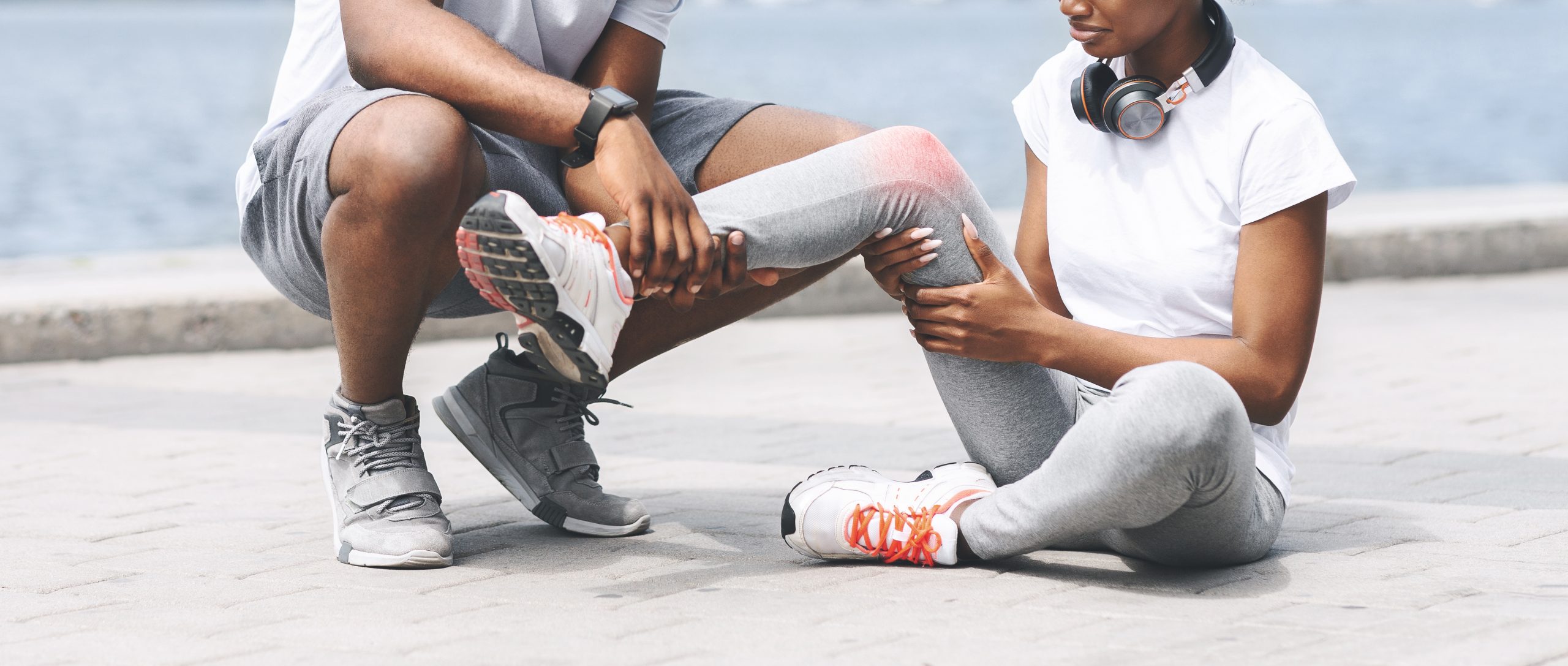
Knee injuries can range from mild to severe. Some of the less severe, yet still painful and functionally limiting, knee problems are:
- Runner’s knee (pain or tenderness close to or under the knee cap at the front or side of the knee)2
- Iliotibial band syndrome (pain on the outer side of the knee)
- Tendinitis, also called tendinosis (marked by degeneration within a tendon, usually where it joins the bone)
Video: “Rehabilitation of the Knee Joint”
Exercises for the knee joint. Set 4A is aimed at strengthening the muscles. Initial stage.
For additional information about postoperative rehabilitation of the knee joint you can watch a video demonstrating exercises and rehabilitation recommendations.
Severe Knee Injuries
More severe injuries include bone bruises or damage to the cartilage or ligaments. There are two types of cartilage in the knee. One is the meniscus, a crescent-shaped disc that absorbs shock between the thigh (femur) and lower leg bones (tibia and fibula). The other is a surface-coating (or articular) cartilage. It covers the ends of the bones where they meet, allowing them to glide against one another. The four major ligaments that support the knee are the:
- Anterior cruciate ligament (ACL)
- Posterior cruciate ligament (PCL)
- Medial collateral ligament (MCL)
- Lateral collateral ligament (LCL)
Cause of Knee Injury
Knee injuries can result from a blow to or twist of the knee; from improper landing after a jump; or from running too hard, too much, or without a proper warmup.3
Bruises, Sprains and Strains
A bruise, or muscle contusion, can result from a fall or contact with a hard surface, a piece of equipment, or another player while participating in sports. A bruise results when muscle fiber and connective tissue are crushed; torn blood vessels may cause a bluish appearance. Most bruises are minor, but some can cause more extensive damage and complications.

Sprains
A sprain is a stretch or tear of a ligament, the band of connective tissues that joins the end of one bone with another. Sprains are caused by trauma such as a fall or blow to the body that knocks a joint out of position and, in the worst case, ruptures the supporting ligaments. Sprains can range from first degree (minimally stretched ligament) to third degree (a complete tear). Areas of the body most vulnerable to sprains are:
- Ankles
- Knees
- Wrists
Signs of a sprain include varying degrees of tenderness or pain; bruising; inflammation; swelling; inability to move a limb or joint; or joint looseness, laxity, or instability.
Strains
A strain is a twist, pull, or tear of a muscle or tendon, a cord of tissue connecting muscle to bone. It is an acute, non-contact injury that results from overstretching or over-contraction. Symptoms of a strain include:
- Pain
- Muscle spasm
- Loss of strength
While it’s hard to tell the difference between mild and moderate strains, severe strains not treated professionally can cause damage and loss of function.
Video: “Ankle Joint Rehabilitation”
EXERCISES FOR THE ANKLE JOINT. SET №6E IS AIMED AT STRENGTHENING OF THE MUSCLES AND IMPROVEMENT OF PROPRIOCEPTION AND STABILITY OF THE ANKLE AND ENTIRE LOWER LIMB. MID STAGE
For additional information about the recovery process after an ankle fracture, you can watch a video demonstrating exercises and rehabilitation recommendations.
Compartment Syndromes: Acute vs. Chronic Exertional
In many parts of the body, muscles (along with the nerves and blood vessels that run alongside and through them) are enclosed in a “compartment” formed of a tough membrane called fascia. When muscles become swollen, they can fill the compartment to capacity, causing interference with nerves and blood vessels as well as damage to the muscles themselves. The resulting painful condition is referred to as compartment syndrome.
Acute Compartment Syndrome
Compartment syndrome may be caused by a one-time traumatic injury (acute compartment syndrome), such as:4
- From a fractured bone
- From a hard blow to the thigh
- By repeated hard blows (depending upon the sport)
Chronic Exertional Compartment Syndrome
Compartment syndrome may also be caused by ongoing overuse (chronic exertional compartment syndrome), which may occur, for example, in long-distance running.5
Shin Splints
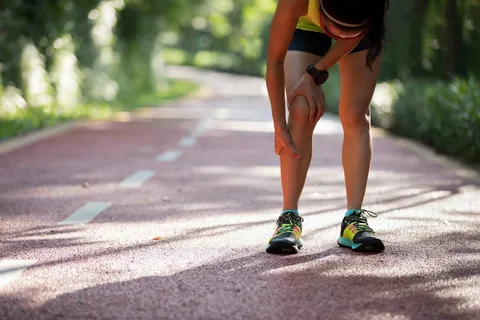
While the term “shin splints” has been widely used to describe any sort of leg pain associated with exercise, the term actually refers to pain along the tibia or shin bone, the large bone in the front of the lower leg. This pain can occur at the front outside part of the lower leg, including the:
- Foot and ankle (anterior shin splints)
- The inner edge of the bone where it meets the calf muscles (medial shin splints)
Risk Factors For Shin Splints
Shin splints are primarily seen in runners, particularly those just starting a running program. Risk factors for shin splints include:
- Overuse or incorrect use of the lower leg
- Improper stretching, warm-up, or exercise technique
- Overtraining; running or jumping on hard surfaces
- Running in shoes that don’t have enough support
These injuries are often associated with flat (overpronated) feet.
Achilles Tendon Injuries
A stretch, tear, or irritation to the tendon connecting the calf muscle to the back of the heel, Achilles tendon injuries can be so sudden and agonizing that they have been known to bring down charging professional football players in shocking fashion.
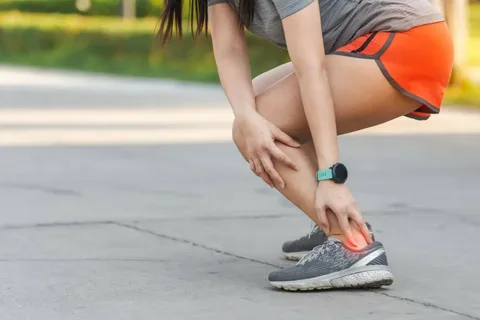
Tendinitis
The most common cause of Achilles tendon tears is a problem called tendinitis, a degenerative condition caused by aging or overuse. When a tendon is weakened, trauma can cause it to rupture.
Achilles Tendon Injury Prevention
Achilles tendon injuries are common in middle-aged “weekend warriors” who may not exercise regularly or take the time to stretch properly before activity. Among professional athletes, most Achilles injuries seem to occur in quick-acceleration, jumping sports like football and basketball, and almost always end the season’s competition for the athlete.6
Bone Fractures
A fracture is a break in the bone that can occur from either a quick, one-time injury to the bone (acute fracture) or from repeated stress to the bone over time (stress fracture).
Closed and Open Fractures
Closed fractures can be simple (a clean break with little damage to the surrounding tissue) or open (a break in which the bone pierces the skin with little damage to the surrounding tissue). Most open fractures are emergencies. One that breaks the skin is especially dangerous because there is a high risk of infection.
Stress Fractures
Stress fractures occur largely in the feet and legs and are common in sports that require repetitive impact, primarily running/jumping sports such as gymnastics or track and field. Running creates forces two to three times a person’s body weight on the lower limbs. The most common symptom of a stress fracture is a pain at the site that worsens with weight-bearing activity. Tenderness and swelling often accompany the pain.
Dislocations: Common Joint Dislocations
When the two bones that come together to form a joint become separated, the joint is described as being dislocated. Contact sports such as football and basketball, as well as high-impact sports and sports that can result in excessive stretching or falling, cause the majority of dislocations.
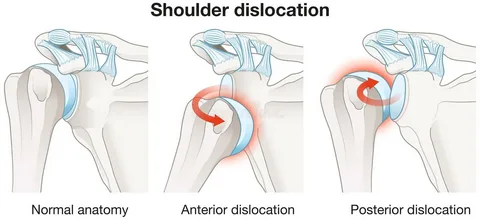
Dislocations Require Medical Treatment
A dislocated joint is an emergency situation that requires medical treatment. The joints most likely to be dislocated are some of the hand joints. Aside from these joints, the joint most frequently dislocated is the shoulder. Dislocations of the knees, hips, and elbows are uncommon.
Traumatic Brain Injury and Spinal Cord Injuries
Traumatic Brain
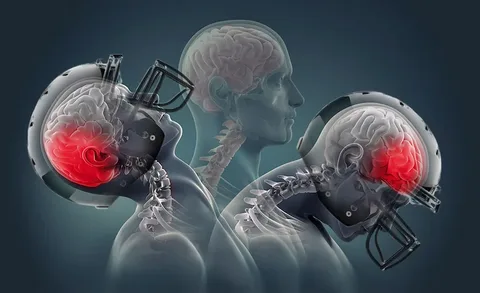
Traumatic brain injury (TBI) occurs when a sudden physical assault on the head causes damage to the brain. A closed injury occurs when the head suddenly and violently hits an object, but the object does not break through the skull. A penetrating injury occurs when an object pierces the skull and enters the brain tissue. Several types of traumatic injuries can affect the head and brain.
- A skull fracture occurs when the bone of the skull cracks or breaks.
- A depressed skull fracture occurs when pieces of the broken skull press into the tissue of the brain. This can cause bruising of the brain tissue, called a contusion.
- A contusion can also occur in response to shaking of the brain within the confines of the skull.
Damage to a major blood vessel within the head can cause a hematoma or heavy bleeding into or around the brain. The severity of a TBI can range from a mild concussion to the extremes of coma or even death.
Spinal Cord Injuries
Spinal cord injury (SCI) occurs when a traumatic event results in damage to cells in the spinal cord or severs the nerve tracts that relay signals up and down the spinal cord. The most common types of spinal cord injury include:7
- Contusion (bruising of the spinal cord)
- Compression (caused by pressure on the spinal cord)
Other types of spinal cord injury include lacerations (severing or tearing of nerve fibers) and central cord syndrome (specific damage to the cervical region of the spinal cord).
Demo version of GHRS sets of exercises for the Lower Limb Problems on YouTube
You can find more information about the Lower Limb Problems in our Blog
Our website presents the following sets of exercises for rehabilitation of the pelvic girdle and hip joint, knee joint and ankle joint:
-
EXERCISES FOR THE PELVIC GIRDLE AND HIP JOINT. SET №1 IS AIMED AT MUSCLE STRETCHING (IMPROVEMENT OF FLEXIBILITY OF THE MUSCULAR APPARATUS) AND INCREASE OF THE RANGE OF JOINT MOVEMENT
-
EXERCISES FOR THE PELVIC GIRDLE AND HIP JOINT. SET №2 IS AIMED AT STRENGTHENING THE MUSCLES
-
EXERCISES FOR THE KNEE JOINT. SET №3 IS AIMED AT STRETCHING THE MUSCLES (IMPROVING THE FLEXIBILITY OF THE MUSCULAR APPARATUS) AND INCREASING THE RANGE OF JOINT MOVEMENT
-
EXERCISES FOR THE KNEE JOINT. SET 4A IS AIMED AT STRENGTHENING THE MUSCLES. INITIAL STAGE
-
EXERCISES FOR THE KNEE JOINT. SET 4B IS AIMED AT STRENGTHENING THE MUSCLES. MID STAGE
-
EXERCISES FOR THE KNEE JOINT. SET 4C IS AIMED AT STRENGTHENING THE MUSCLES. ADVANCED STAGE
-
EXERCISES FOR THE ANKLE JOINT. SET №5 IS AIMED AT STRETCHING THE MUSCLES (IMPROVEMENT OF FLEXIBILITY OF THE MUSCULAR APPARATUS) AND INCREASE OF THE RANGE OF JOINT MOVEMENT
-
EXERCISES FOR THE ANKLE JOINT. SET №6D IS AIMED AT STRENGTHENING OF THE MUSCLES AND IMPROVEMENT OF PROPRIOCEPTION AND STABILITY OF THE ANKLE AND ENTIRE LOWER LIMB. INITIAL STAGE
-
EXERCISES FOR THE ANKLE JOINT. SET №6E IS AIMED AT STRENGTHENING OF THE MUSCLES AND IMPROVEMENT OF PROPRIOCEPTION AND STABILITY OF THE ANKLE AND ENTIRE LOWER LIMB. MID STAGE
-
EXERCISES FOR THE ANKLE JOINT. SET №6F IS AIMED AT STRENGTHENING OF THE MUSCLES AND IMPROVEMENT OF PROPRIOCEPTION AND STABILITY OF THE ANKLE AND ENTIRE LOWER LIMB. ADVANCED STAGE
-
In addition to the listed sets of exercises please check out article and sets of exercises for the Post-traumatic Rehabilitation of Gait Disorders
What’s the Difference Between Acute and Chronic Injuries?
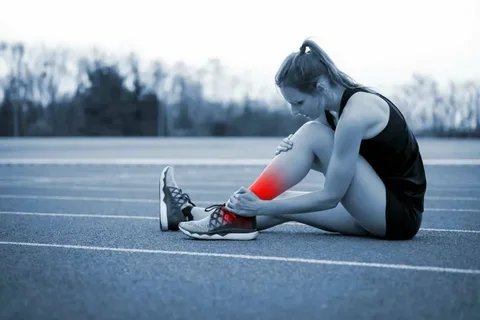
Acute injuries
Acute injuries, such as a sprained ankle, strained back, or fractured hand, occur suddenly during activity. Signs of an acute injury include:
- Sudden, severe pain
- Swelling
- Inability to place weight on a lower limb
- Extreme tenderness in an upper limb
- Inability to move a joint through a full range of motion
- Extreme limb weakness
- Visible dislocation/break of a bone
Chronic Injury
Chronic injuries usually result from overusing one area of the body while playing a sport or exercising over a long period. Signs of a chronic injury include:8
- Pain when performing activities
- A dull ache when at rest
- Swelling
What Should I Do If I Suffer an Injury?
Whether an injury is acute or chronic, there is never a good reason to try to “work through” the pain of an injury. When you have pain from a particular movement or activity, STOP! Continuing the activity only causes further harm.

Some injuries require prompt medical attention, while others can be self-treated.
When to Seek Medical Treatment
You should call a health professional if:
- The injury causes severe pain, swelling, or numbness
- You can’t tolerate weight on the area
- The pain or dull ache of an old injury is accompanied by increased swelling or joint abnormality or instability
If you don’t have any of the above symptoms, it’s probably safe to treat the injury at home, at least at first. If pain or other symptoms worsen, it’s best to check with your healthcare provider.
By Carol Eustice
Carol Eustice is a writer covering arthritis and chronic illness, who herself has been diagnosed with both rheumatoid arthritis and osteoarthritis.
Demo version of GHRS sets of exercises for the Upper Limb Problems on YouTube.
You can find more information about the Upper Limbs Problems in our Blog.
Our website presents sets of exercises for the upper limbs in the following areas:
-
UPPER LIMB: SET №1 IMPROVEMENT OF MOBILITY AND RANGE OF JOINT MOVEMENT
-
UPPER LIMB: SET №2 STRENGTHENING THE MUSCLES OF THE SHOULDER COMPLEX AND JOINT STABILIZING. INITIAL STAGE
-
UPPER LIMB: SET №3 STRENGTHENING THE MUSCLES OF THE SHOULDER COMPLEX AND JOINT STABILIZING. MID STAGE
-
UPPER LIMB: SET №4 STRENGTHENING THE MUSCLES OF THE SHOULDER COMPLEX AND JOINT STABILIZING. ADVANCED STAGE
-
UPPER LIMB: SET №5 EXERCISES FOR ELBOW JOINT
-
UPPER LIMB: SET №6 EXERCISES FOR A WRIST JOINT AND HAND
Sources
Verywell Health uses only high-quality sources, including peer-reviewed studies, to support the facts within our articles. Read our editorial process to learn more about how we fact-check and keep our content accurate, reliable, and trustworthy.
- Matuszak JM. Preventing Sports Injury and Illness: Key Resources for Family Physicians. American family physician, 2017; 95(8), 479-482.
- Crossley KM, Callaghan MJ, Van linschoten R. Patellofemoral pain. Br J Sports Med. 2016;50(4):247-50. doi:10.1136/bjsports-2015-h3939rep
- Mehl J, Diermeier T, Herbst E, et al. Evidence-based concepts for prevention of knee and ACL injuries. 2017 guidelines of the ligament committee of the German Knee Society (DKG). Arch Orthop Trauma Surg. 2018;138(1):51-61. doi:10.1007/s00402-017-2809-5
- Schmidt AH. Acute Compartment Syndrome. Orthop Clin North Am. 2016;47(3):517-25. doi:10.1016/j.ocl.2016.02.001
- Vajapey S, Miller TL. Evaluation, diagnosis, and treatment of chronic exertional compartment syndrome: a review of current literature. Phys Sportsmed. 2017;45(4):391-398. doi:10.1080/00913847.2017.1384289
- Egger AC, Berkowitz MJ. Achilles tendon injuries. Curr Rev Musculoskelet Med. 2017;10(1):72-80. doi:10.1007/s12178-017-9386-7
- Chan CW, Eng JJ, Tator CH, Krassioukov A. Epidemiology of sport-related spinal cord injuries: A systematic review. J Spinal Cord Med. 2016;39(3):255-64. doi:10.1080/10790268.2016.1138601
- Aicale R, Tarantino D, Maffulli N. Overuse injuries in sport: a comprehensive overview. J Orthop Surg Res. 2018;13(1):309. doi:10.1186/s13018-018-1017-5
Additional Reading
- NIH Publication No. 04-5278



